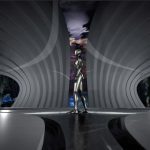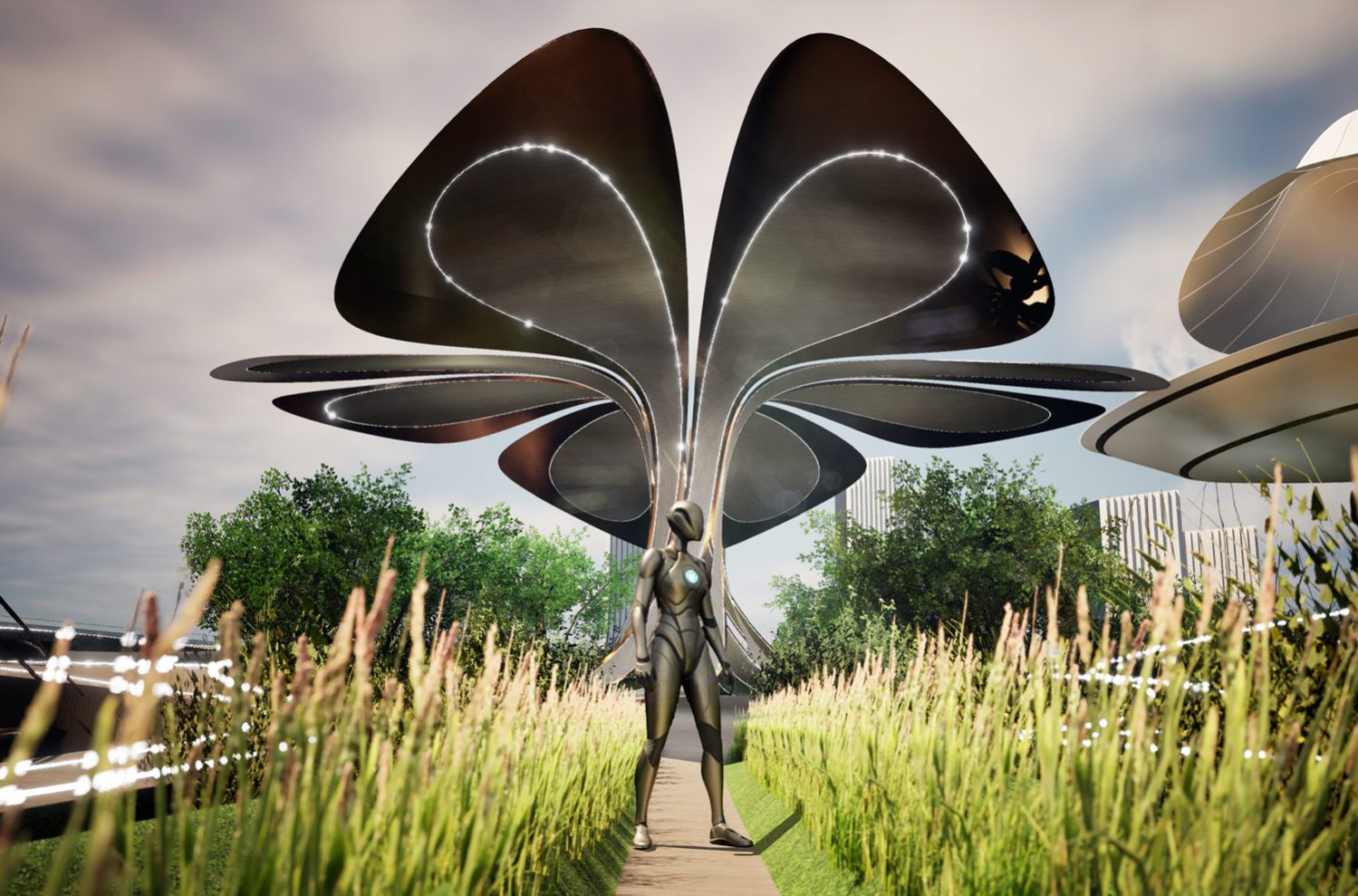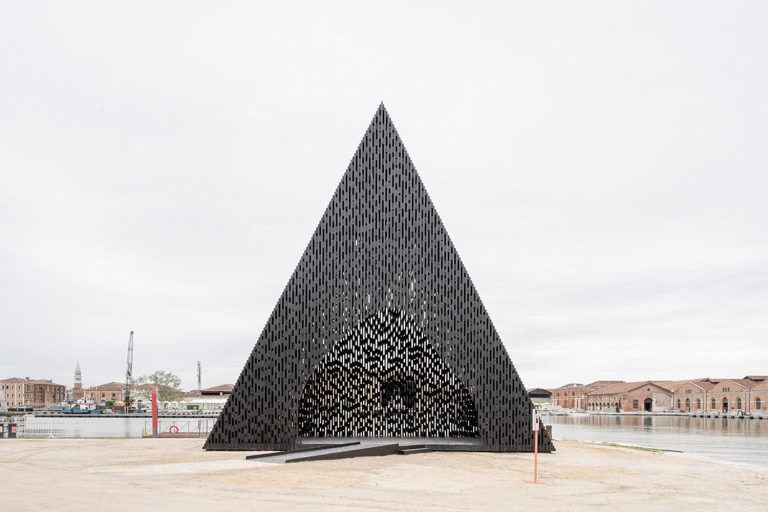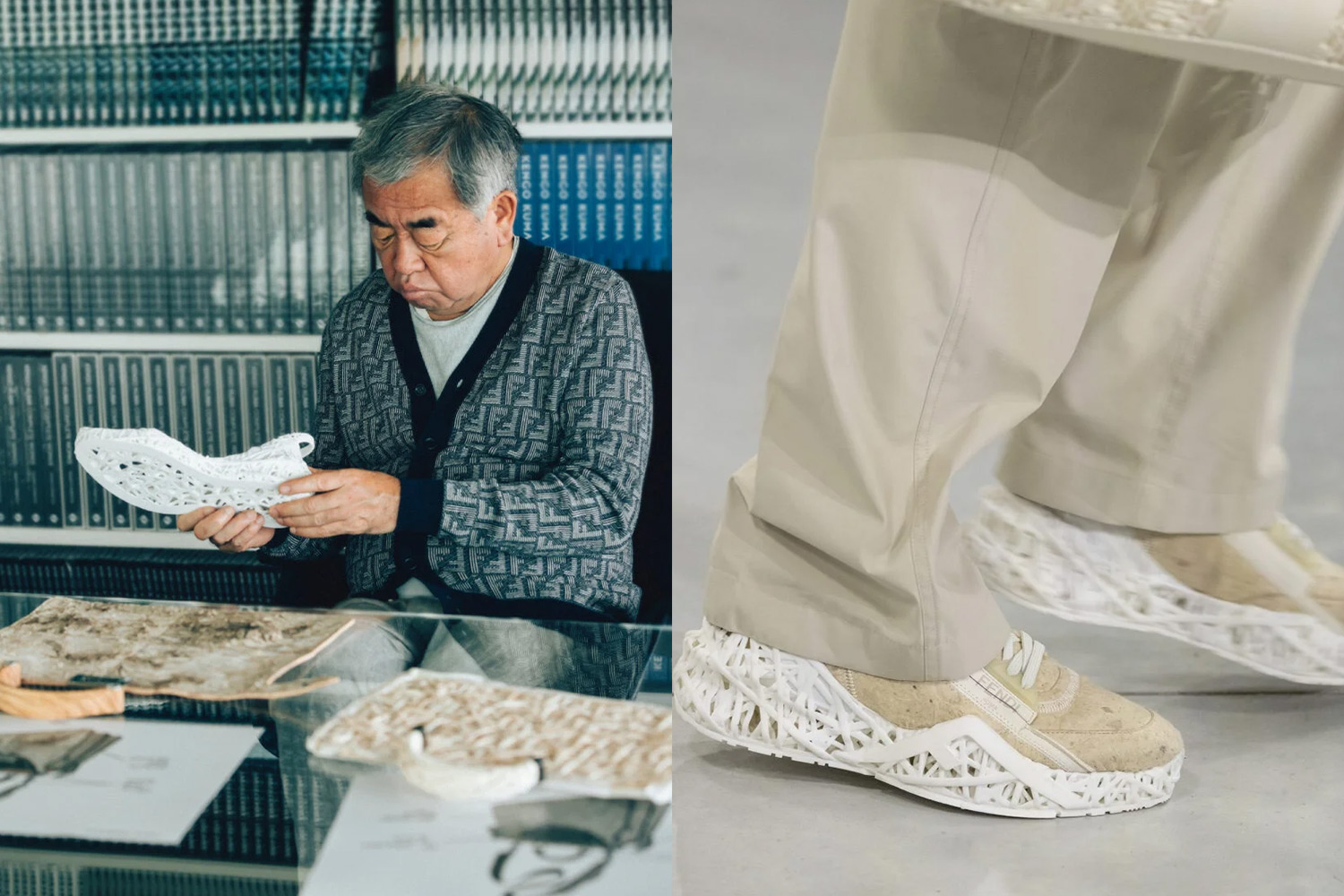ELEMENTAL is a meta park created for discovering the 4 elements earth, fire, water, and air. Jennifer Durand and Daniel Escobar created the project as a part of PAACADEMY’s “Meta-Fluid Studio” with Mariana Cabugueira. The project’s main objective was to create a well-being experience using natural and architectural elements in the metaverse.

The Meta-Fluid online workshop was hosted by PAACADEMY, between May 15-July 15, 2022, on ZOOM. Meta-Fluid is one of the High-demand workshops at the PAACADEMY that focuses on exploring the quality and power of Fluid Design to conceive cyber-urban environments in virtual cities. The goal is to create a free-standing virtual city designed by 30 different designers teamed up in 3s. Some teams create meta-archi typologies for this studio, and some designers will join skills to develop a ‘Meta-Urban’ base. Combined, they make a free-standing, fluid virtual urban field and prove the Multi-Author Urban Design to be the directionality for the future of virtual cities.

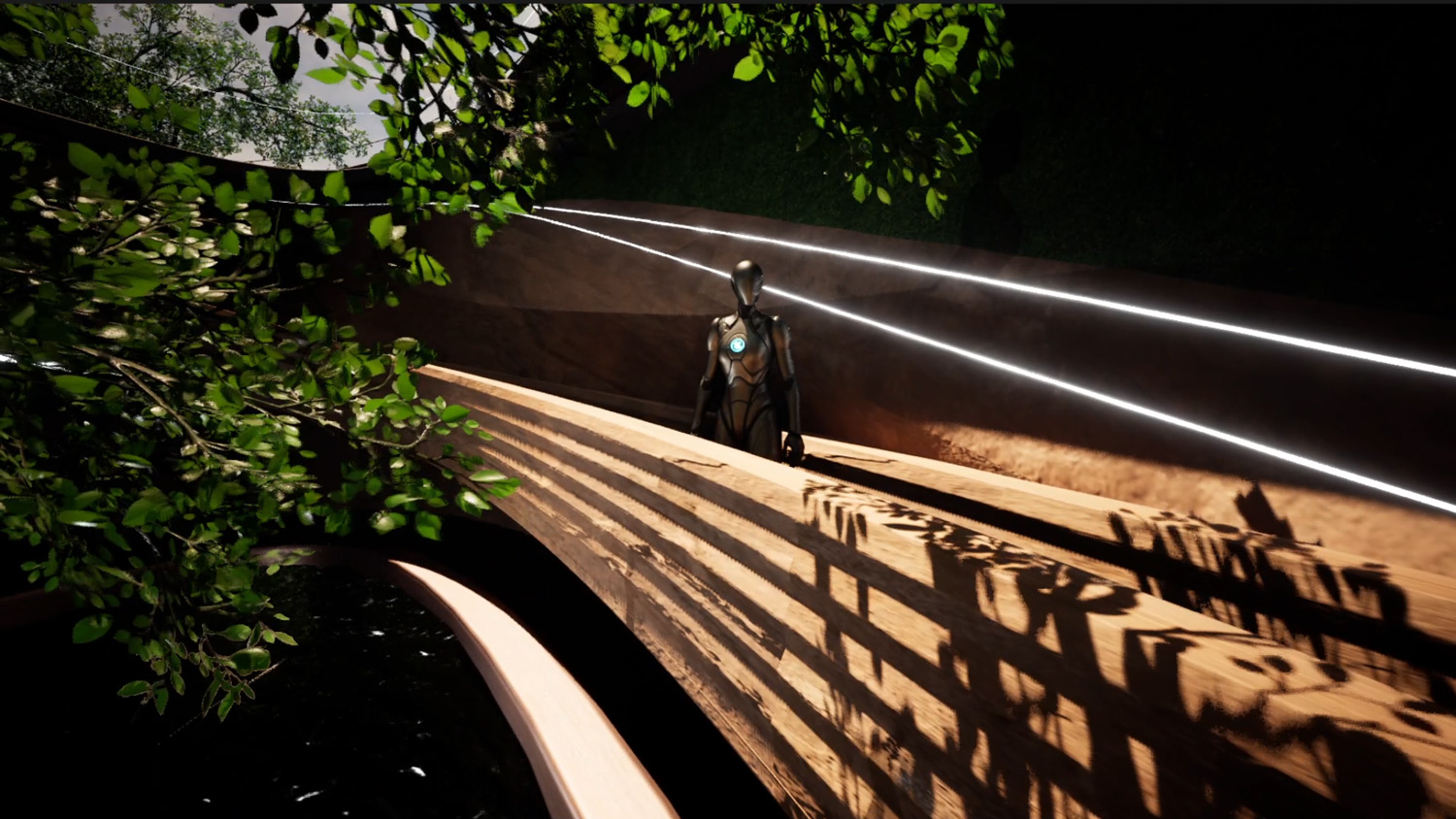
The designers had previously explored other metaverse virtual platforms and building typologies ranging from a skyscraper and more sci-fi environments. Through their projects, they consider posing questions that might lead them to develop a narrative that lets them synthesize multiple ideas in new ways. In this case, the project idea started when they wanted to work with the natural and the digital. As technologies push for more realism in the visualization of environments and meta worlds, They wanted to see if it’s possible to develop still sensations that are natural in the built environment through architectural elements and natural elements. If city dwellers go to the countryside for relaxation, where do people go for digital escape? Is it just another video, or do they start creating natural environments that also have the potential to nurture the senses and emotions? They realized this project was a response to what might be a future not so distant.
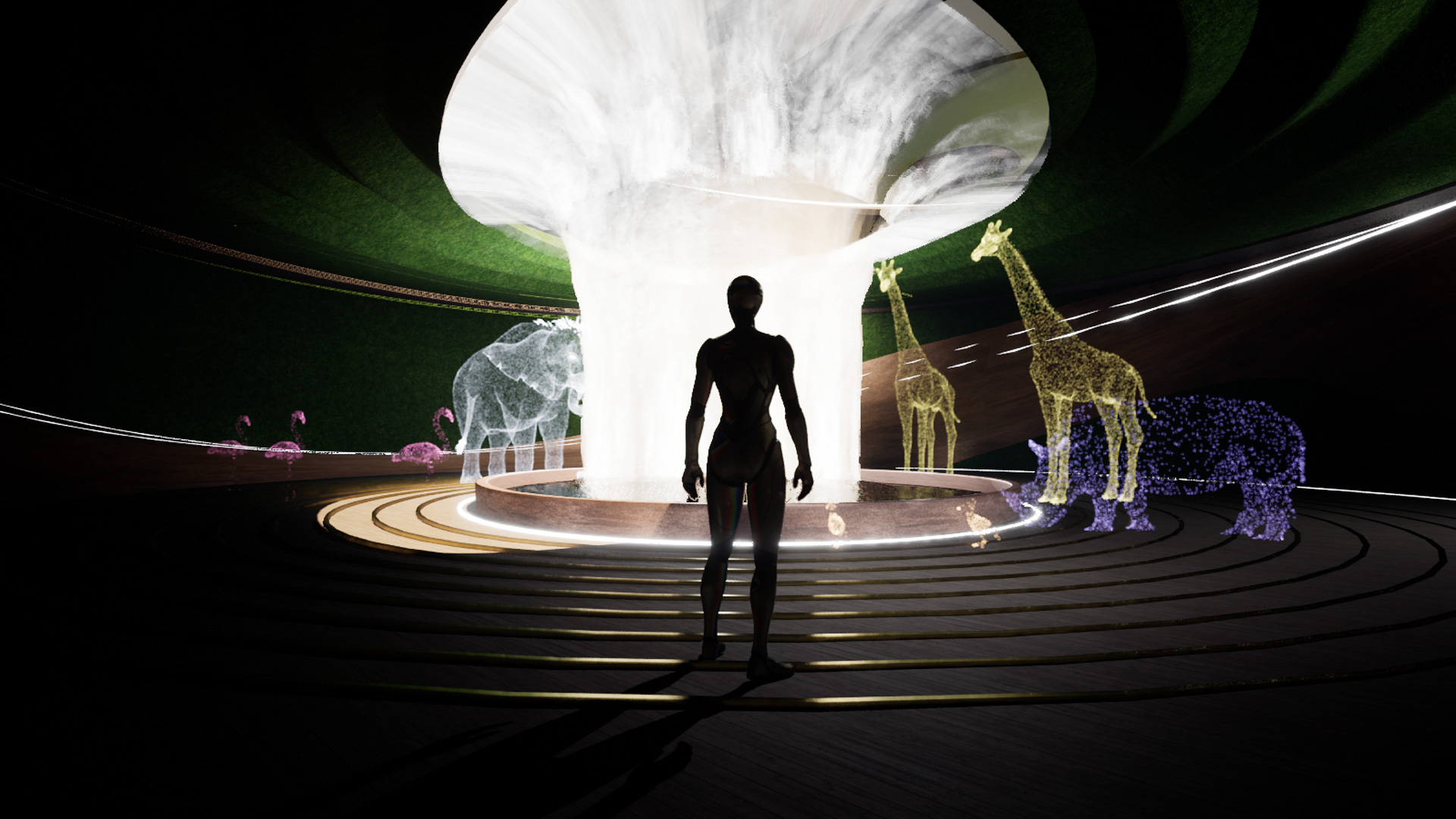
The design process started by asking, “Do you think we can recreate a well-being experience using natural elements and architectural elements as an interface in the metaverse?”
In the beginning, the designers borrowed inspiration from nature; they started researching water and the geometry that could be generated when a drop of water falls. Seeing the patterns and rhythms of these geometries, they decided that this would be the starting point of inspiration for the proposal. They also investigate organic architecture, pattern games on ceilings and floors, and the critical use of light to generate sensations of calm in spaces. In addition, they studied stress in people and how being able to reconnect them with the four essential elements could help people to disconnect a little from what stresses them and meditate, entering a zen state by changing only two senses (they notice it from experience when people join with VR glasses and headphones)

They started the project by discussing the various themes they wanted to explore. After the discussion, they moved on to sketches and pulled imagery aligned with the concept. This process was coupled with modeling iteratively through a variety of scenarios and geometries usually translated from sketches or through improvisation. In the end, they critique and judge, and make adequate changes to push the concept translation forward.

The whole project modeling was created using Autodesk Maya. Maya is the best form-finding software, as you can quickly make many design iterations. At the beginning of the project, they tested different ideas and scales for the buildings. Reaching the end, they used a more human-like scale for the structure because they wanted to create that type of experience in the metaverse. Thanks to the Catmull Clark algorithm in Maya, the geometry realized has a unique aesthetic quality that allows for great spatial design.

From the beginning, designers focused on creating a metaverse project, so they started to think differently to make a unique experience inside the project. Each of the buildings has a particular mood (because of materiality and lighting fixtures), so when they integrated the project inside Unreal Engine, they had that point very clear. Unreal has the option to add very realistic vegetation into the project, also water fixtures, animals, and particle effects that enhance the project. At the video recording stage, Unreal has a cinematic camera for making unmatched reels in their output quality; that was the main reason they used Unreal in this project.

Although the project intended to create a nonhierarchical multilayered park, they deducted that by creating spatial elements with a unique atmosphere, there is more richness in the navigation and exploration of this meta park. This feature serves the natural curiosity analogous to when we are in physical nature and seek to explore its different landscapes and formation, freeing ourselves of urgency to go somewhere, rather finding the journey to be the time where we might encounter something unexpectedly pleasant.

Humans have been trying to tame nature by using the earth to plant vegetables, fire to heat homes, air to push a sailboat across the Atlantic, and water to create cities. Plato labels these four elements as the keys to our existence and our understanding of life on this planet unfolds. They exist in the physical world and, as of recent years, have been simulated and observed through digital tools. One question is, if they have been created in virtuality, they can give us the same sensations as we have in reality, or this copy of the physical life will create a whole catalog of new feelings? Do they need to be included in our digital worlds? Since the designers control what is generated in the metaverse, does nature still need any representations?

Stay tuned with us to see more projects in the upcoming days from the PAACADEMY’s workshop. Click here to register and watch the recordings of the Meta-Fluid Studio.
Credits:
Studio workshop by PAACADEMY
Studio title: Meta-Fluid
Lead by: Mariana Cabugueira
Project name: ELEMENTAL
Students: Jennifer Durand & Daniel Escobar
Date: From May 15 to July 15, 2022

